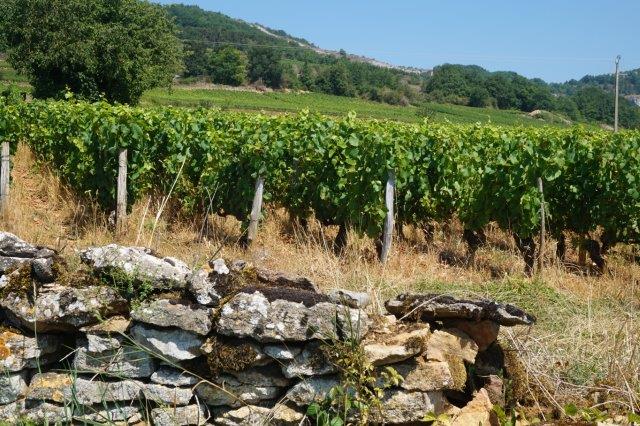Burgundy - C'est Compliqué!

24 October 2018
Burgundy, where some of the best, and most expensive, wines of the world are made, is complicated. In fact, the Burgundy Wine region is one of, if not the, most complicated regions in the World. Even those that have been in the wine trade for decades, are constantly surprised by the information that comes to their attention. There are many different appellations and levels of quality and the mosaic of small parcels of land planted with vines, called ‘climats’, can vary greatly one from another. Not only that, but a ‘climat’ may have multiple ownership, and each producer’s wine is also different.
The Central area of the Burgundian vineyards is called the 'Cote d'Or' literally translated as 'The Golden Hill'. This name may have arisen from the fact that the wines produced there are so expensive, but another theory relates to the photo of the vineyards seen below. At this time of year, the leaves of the vines turn to their Autumn colours, and the entire hillside takes on the colour of gold.
The beautiful historic town of Beaune sits in the middle of the two parts of the Côte d'Or, with the Cote de Beaune to the south and Cotes de Nuits to the north. The Cotes de Nuits is home to such wonderfully evocative names as Nuits Saint Georges, Corton and Gevrey Chambertin. The vineyard area is split into dozens of what are called 'parcels' - small, individual vineyards, each with their own characteristics, given by soil and microclimate. These vineyards are classified according to quality, with origins of this classification going back hundreds of years to when the vineyards were owned by the monks. At that time the wines were used for Communion, and perhaps it's not surprising that the churches were full.
The Cotes de Beaune, mainly south of the town itself, includes such world-renowned wines as Meursault, Puligny and Chassagne Montrachet, but some other lesser known regions also make outstanding wines. The region of Santenay is a prime example. The vineyards are located on the hills south of Beaune, surrounding the little village of Santenay and, until recently, were mainly planted with Pinot Noir for red wines. However, whether due to the world-wide demand for Chardonnay, or other reasons, such as suitability of the soil and terroir, many hectares of Pinot Noir are being replaced with Chardonnay.
Chateau de la Crée is a producer of some of the top wines from Santenay and the American owners have taken a bold decision to replant 4 of their 11 hectares with mainly Chardonnay. Their intention, along with a few other producers, is to bring Santenay wines up to a new level. Many of the vineyards adjoin those of the much better-known appellation of Chassagne Montrachet, famed the world over for its top-quality white wines. Scientific testing appears to show that the terroir in many areas, is more suited to Chardonnay than Pinot Noir, hence the changes which represent a not inconsiderable amount of investment.
The Chateau itself dates back to the Fifteenth century and was owned by Nicolas Rolin, who founded the Hospices de Beaune in 1443. Rebuilt in the Eighteenth century after the French Revolution, it now has fine reception rooms and a tasting cellar. A range of both red and white wines are produced of impressive quality. The Santenay Premier Cru 2015 Gravières comes from vineyards which are 250 metres from Chassagne Montrachet, on the northern part of the region on clay and limestone soils. An extremely appealing wine of great quality, with complexity, length and depth. Creamy, honeyed and aromatic, from 14 months ageing partially in new oak barrels.
The red wines from Chateau de la Crée are equally appealing and the Clos Faubard 2015 Premier Cru was balanced and elegant, with soft, ripe tannins and a long finish. But the emphasis for the future is firmly on increasing the white wine production, which has the potential to become one of the world’s greats.
Burgundy is a fascinating region to visit and easily reachable by car from the UK, perhaps with a stop-over in Champagne on the way down. Not too much of a hardship. Tasting wines on a sunny autumn afternoon, surrounded by a sea of golden vine leaves on a Burgundian hill-side, must be one of the Seven Gourmet Wonders of the World.

